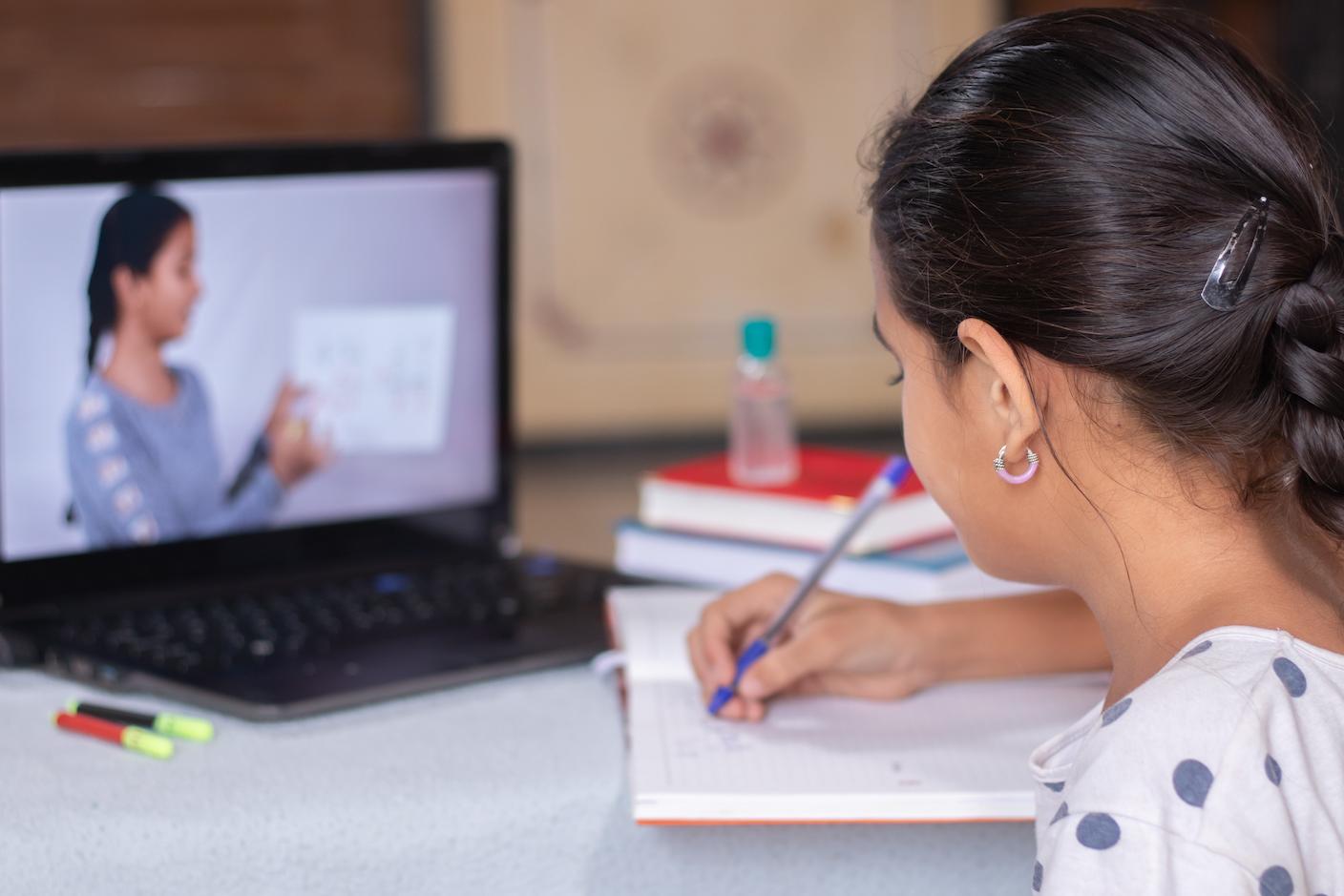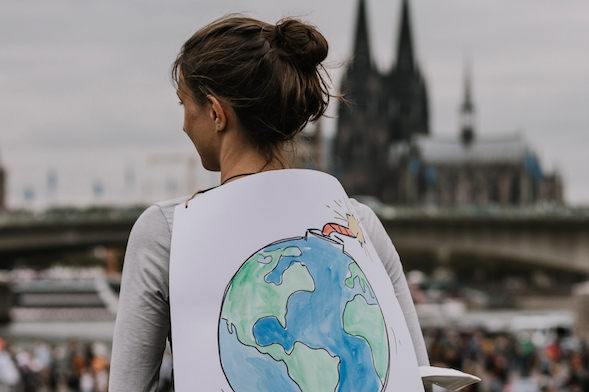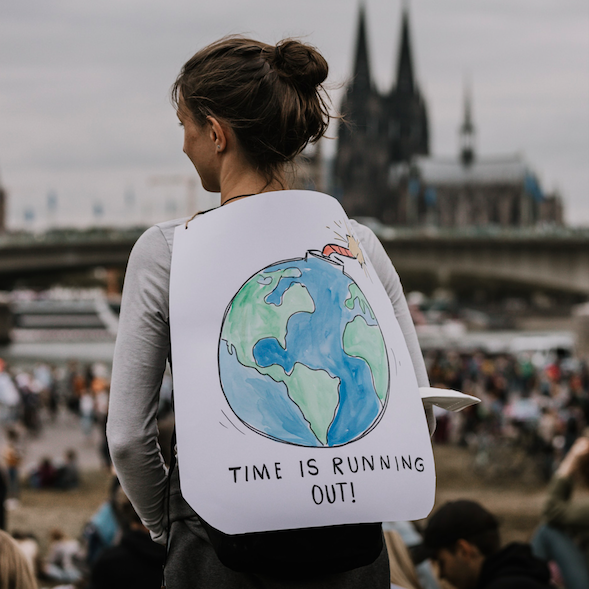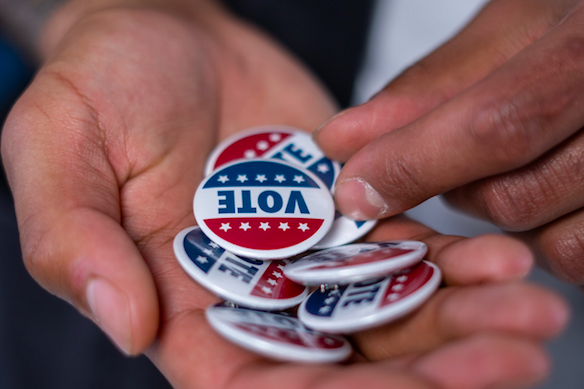How Tech Nonprofits Can Seize Market Opportunities That Companies Overlook


Tech nonprofits keep stepping in where companies aren’t. And more opportunities within the nonprofit space keep appearing.
The demand for nonprofit programs and services had already increased before the COVID-19 pandemic began. And during the pandemic, 26 percent of social service nonprofits reported revenue growth; that data illustrate the increasing demand for education, food assistance and other services.
A unique benevolent type of nonprofit has emerged to help solve the problems amplified by the pandemic. Fast Forward, a tech nonprofit startup accelerator, knows this. It works with nonprofits with technology at the core of their impact models and provides funding, mentorship and network support.
In a recent interview with TriplePundit, Fast Forward’s executive director, Shannon Farley, explained why tech nonprofits are booming right now and why this combination of sectors is profitable and can help drive solutions.
How tech nonprofits seize opportunities in market failures
This is an opportune time for tech nonprofits because they can meet increasing demands with an easy, accessible tool that is central to their solutions. “Technology has become so much cheaper and there is a generation of founders who grew up with a phone in their pockets,” said Farley. “The problems are so big; they require technology to reach scale.”
The pandemic has amplified issues of access, resources and equity across industries. Disrupted supply chains, and a decreased demand in tourism, the travel sector and other industries have had impacts both businesses and consumers. Right now, governments are tasked with managing the reopening and closure of essential public services, providing supportive policies for businesses and delivering social assistance. While authorities juggle multiple priorities on a high-level, tech nonprofits can deliver solutions directly to communities.
Scaling impact
According to Farley, tech nonprofits can thrive in areas like health care, mental health and education where there are market failures. These failures include cost challenges and last-minute emergency responses.
Considering these trends, Fast Forward is helping startups network and build connections. After learning that almost half of Americans can't cover emergencies up to $400, Ronnie Washington, with support from different partnering organizations, launched Onward in 2016. This platform encouraged low-wage employees to start personal savings plan. After working with Fast Forward, the employee benefit platform won the $25,000 BlackRock Employee Choice Award, gained mentorship connections with Google, and received a $1 million grant from the Chan Zuckerberg Initiative to name a few milestones.
In 2021, the accelerator introduced The Fast Forward Academy to teach social entrepreneurs about businesses models, raising capital and building organizational culture. A recent example of its impact is Almost Fun.
The organization’s founder, Lisa Wang, launched Almost Fun, a digital library of math lessons to help middle school and college students understand math. In 2021, the platform served over a million students. Almost Fun has also partnered with Snap, the results of which included more students accessing the library’s math resources on the social media app.
Where are tech nonprofits headed?
Tech nonprofits must consider the challenges and opportunities of two different sectors. “It’s hard to be a tech nonprofit because it’s everything about being a tech startup and everything being a nonprofit at the same time," said Farley.
The pandemic has accelerated digital adoption, though not necessarily out of choice for nonprofits. During the pandemic, nonprofits faced limited financial contributions, travel restrictions, increased costs, and staffing issues. In response to this, the social sector was compelled to rely on innovation and quickly adopting digital technology. With this, the focus of nonprofits leaders has been to transform their operations, develop new fundraising strategies and deliver services that reflect the changing needs of communities.
On the other hand, tech startups face challenges around technical and business expertise and market access. These startups must not only focus on delivering technological solutions but also produce services that can create an attractive return on investment. The combination of these sector issues makes tech nonprofits all the more interesting and challenging. And in the case of meeting a wide range of challenges, resources and help do exist.
Farley explained to 3p that right now there are communities of founders who have tried, tested and figured out solutions. And these trailblazers make excellent supportive peers. For the future, Fast Forward is looking into business models that can increase the capital available to later stage tech nonprofits.
"I think as many social, environmental and human problems we have, there needs to be tech nonprofits that are building products for those communities," said Farley. "We need more tech nonprofits; we need more tech-driven solutions to help solve these problems."
Image credit: Alexander Suhorucov via Pexels
Transformational Investing in Communities of Color


This article on inclusive investing was previously published on Green Money Journal in its February 2022 edition.
After spending a decade working nationally to advance social and environmental justice through land conservation, I was looking for a way to continue purpose driven work while also establishing roots within the community where I was living. There was no turning back after I discovered CDFIs.
For those looking to invest in a solidarity economy, Community Development Financial Institutions (CDFIs) offer a proven way to achieve the instant gratification of knowing one’s investment will immediately make a positive impact on someone’s life and contribute to a long-term shift in who participates in our nation’s economy. Attuned to the greatest needs of underrepresented communities, investments in CDFIs represent an opportunity to place one’s money where it has meaning, to generate a return on relationships and to join a movement of some of the most influential corporations in the world.
Invest in a place where your money has meaning
Nowhere do dollars invested make a greater difference than those invested in CDFIs led by and located in communities of color. HOPE, a Black and Women Owned CDFI Credit Union, has helped generate $3 billion in financing that has benefited nearly 2 million people across the most economically distressed areas of the Deep South. Far too often, communities of color are overlooked and underserved by the banking sector. As a result, these capital starved communities simply do not have the wealth traditional banks require to qualify for and meet the demand for small business or mortgage loans.
CDFIs have a long track record of importing dollars into these communities to address this challenge. Since 1973, CDFIs have worked for economic, social, and political justice and now manage more than $200 billion, creating jobs, affordable housing, access to financial health, and a chance to build wealth for many that would not otherwise have that opportunity. I see this every day at Hope Credit Union (HOPE), where I work. Take for example the town of Itta Bena, MS (population of approximately 2,000, where nearly 1 out of 2 residents live in poverty). The deposit potential for the entire community is less than $1.5 million. Even if HOPE had every dollar on deposit at our Itta Bena branch, the only financial institution in the community, we could not meet every financial need. Resources from the outside are essential for fostering economic mobility.
When impact investors deposit money at HOPE, it doesn’t just fill financial gaps – it changes lives. HOPE member, Dominique is a prime example. A single Black mother of a 3-year-old child, she became a first-time homebuyer through HOPE. When she did not have the resources to save for a down payment, HOPE had the financial products to get her into a home. HOPE’s Affordable Mortgage Product provides financing up to 100% of the value of the house being purchased. Additionally, HOPE also taps networks to make Down Payment Assistance available to cover closing costs. Dominique took advantage of HOPE’s mortgage program and is a proud homeowner today. (For more on Dominique’s story watch this Banking On Us video)
These products are a tangible response to the historic and structural disadvantage caused by the racial wealth gap. The gap is about 10:1 – $171,000 in median net worth for white families in contrast to $17,150 for Black families (source: Brookings). CDFIs like HOPE use financing tools like the mortgage program summarized above to close – rather than widen this gap. At HOPE, 8 out of 10 mortgage borrowers are people of color and first-time homebuyers; sixty-five percent are women.
Investing in a return on relationships
Along the path towards building a more just economy, we are used to hearing all of the promises of technology. While I see daily the efficiencies created through technology, I also know there are lessons learned, trust built, and other efficiencies created by interacting with another person. For many in HOPE’s Deep South region, a region with a long history of disinvestment in people of color, a lack of trust toward financial institutions creates barriers to accessing capital. CDFIs build trust first by being present. In many communities, rural and urban, HOPE is the only responsible financial institution to offer affordable loan products and advice. Perhaps this is why Ms. Fannie Dotson, a Black woman who spent her entire life in the Mississippi Delta, waited until her 100th birthday to open her first bank account at Hope Credit Union – the first financial institution she felt listened and treated her with respect.
This approach extends to building relationships with impact investors by providing transparency on the impacts of one’s investment, an understanding of the community challenges the organization is working to address, and excellent customer service.
A movement of moments
For fixed-income investments, many CDFIs offer notes with varying rates of return and terms as well as certificates of deposit (CDs). Both of these offer low-risk and little barrier as they can be opened at $1,000 or sometimes less. For CDFI banks and credit unions, investments like these fuel the loans like the one made to Dominique.
Recently, the U.S. Treasury announced awards for 84 CDFIs and minority designated credit unions through the Emergency Capital Investment Program (ECIP). ECIP was created by Congress in late 2020 to provide community development credit unions and banks with long term (30 year), low-cost capital to help businesses, homeowners and individuals recover from the economic crisis. As a result of the federal program, there is an unprecedented opportunity to leverage deposits and expand the impact of organizations like HOPE in the nation’s most economically distressed region. For HOPE, this means our $88 million ECIP award, a loan that can be treated as regulatory capital, has an opportunity to raise over $700 million in deposits – every dollar of which can be deployed in places like Itta Bena. These deposits will work alongside hundreds of existing deposits from major corporations like PayPal, NIKE, and Netflix to small nonprofits, individuals, and others. By investing cash reserves in HOPE’s Transformational Deposit program, a low-rate money market or CD account, one contributes to scaling impact in the Deep South more than any other time in our 27 year history, all with the safeguards in place of a federally insured and regulated institution.
In a nation becoming more Black and Brown, HOPE’s Transformational Deposit program represents an investment in the potential of the nation as a whole and the values on which it was founded. If you or your clients are looking to prioritize social profitability instead of purely financial profits, track records show CDFIs are positioned to advance economic opportunity for all. Now more so than any other time in our movement, we have the opportunity to scale this work together.
Image credit: August de Richelieu via Pexels
New Nonprofit Accelerator Aims to Close the Digital Divide Worldwide


Over 40 percent of lower-income Americans do not have access to broadband services in their homes, according to a 2021 survey from the Pew Research Center. The coronavirus pandemic has made this disparity more clear and exacerbated existing issues: Globally, a third of school-age children — 463 million kids — lacked access to tools for remote learning in the early months of the pandemic. But digital equity is a problem that goes beyond education: Limited access to technology and the internet also means reduced access to healthcare and fewer opportunities for training, skills development and employment.
A new Digital Equity Accelerator launched by Aspen Digital and HP aims to bridge the gap across the globe, especially for those historically facing a digital divide.
In 2021, HP announced a goal to accelerate digital equity for 150 million people around the world by 2030. The partnership with Aspen on the Digital Equity Accelerator is intended to constitute a main driver for impact with an emphasis on education, healthcare and economic opportunities. HP is an advisor and funder, and Aspen Digital — the Aspen Institute program working at the intersection of technology and equity — will operate the initiative.
Building digital equity from the ground up
The pilot phase of the accelerator will support up to six nonprofits in India, Morocco and the United States that are working to create digital equity in underserved communities. In particular, the pilot will focus on organizations serving communities including women and girls, people with disabilities including aging populations, educators and healthcare practitioners, and historically marginalized groups.
Unlike similar accelerator programs, this collaboration aims to operate from the ground up, utilizing Aspen Digital’s expertise in the equitable and responsible stewardship of technology to bolster participants with the resources to overcome barriers to digital equity in their specific communities.
Rather than go it alone, HP says it’s joining up with Aspen Digital to bring deeper impact and accountability. “Often in the social space, it’s about writing a check and talking about impact,” Michele Malejki, global head of social impact at HP, told TriplePundit. “We will be listening and learning from these nonprofits and their beneficiaries. We want to understand where we have further opportunities to not just accelerate, but innovate, via our products and solutions. We will use these insights to further elevate our solutions so we can scale impact even faster.”
To that end, the accelerator is taking a bottom-up approach and prioritizing what participants in the program need, as opposed to what HP can offer. “This project isn’t charity,” said Vivian Schiller, executive director of Aspen Digital. “It’s about creating resilience in communities that need it most via technology. We’re very focused on leveling the playing field and in advancing equity for all people.”
The initial accelerator program will last four months, and participants—all of whom will be nonprofits—will receive tech equipment tailored to their needs, along with more than $100,000 each in financial support.
What does success look like?
Impact is the most important outcome of the accelerator, Schiller said. HP and Aspen Digital aim to measure impact from the jump, and they’ll assess potential impact as they choose which nonprofits will participate in the pilot. “We want to see what can be replicable by other entities,” Schiller told 3p. “We’re keeping an eye on proposals that have a compounding effect: People are reached not just directly by the incubating organization but by those these nonprofits reach, as well.”
While Aspen Digital will manage the operations of the accelerator, HP will take an active role in providing support through not only the provision of hardware for the participants, but also the expertise of their people, who will act as mentors where relevant and needed.
HP is not the only source of mentors for the accelerator. Aspen Digital is assembling a diverse network of practitioners who can provide technical and sectoral experience, as well as lived experiences, to work with the participants. Again, the focus will be on identifying opportunities based on the needs of the participants, rather than what is deemed necessary by the mentors.
Historically, initiatives like this would have “wonderful intent,” Malejki said, “but didn’t always have the right impact.” Starting with listening to and learning from the participants about their needs will help tailor mentors and equipment to achieve that greater impact.
Only the beginning: Scaling the accelerator to reach people worldwide
Aspen Digital will run the program, from evaluating applications, to setting up an advisory council and selecting expert mentors, to administering the grantees all the way through the four-month process. At the end, pilot participants will have a demonstration day, where they will present the impact and results of their work to potential funders and partners. The Accelerator will provide additional support after the program ends, as the nonprofits implement their plans.
The idea is that the pilot will eventually expand into a larger, permanent program based on lessons learned about what works and what doesn’t. “Nonprofit groups will identify solutions and scale and accelerate positive outcomes in the communities they service,” Schiller said.
A new kind of partnership
The accelerator is a new kind of partnership for both organizations. For Aspen Digital’s Schiller, “the idea of teaming up with HP — and the fact that they’re bringing to bear not only material goods but also the mentorship, talent and expertise of their people — is really exciting.”
HP sees its role as support rather than director. “This program is calling for applications for the program so we can hear what the problems are,” Malejki said, “rather than having someone coming in and saying what should be done.”
Applications are open now through March 21, 2022. To learn more about the criteria and process, visit AspenDigitalEquity.org.
This article series is sponsored by HP and produced by the TriplePundit editorial team.
Image credits: Getty Images via Aspen Digital
Six Food Tech Companies to Watch in 2022


With cacao vulnerable to climate change risks, more food tech companies are creating alternatives for chocolate and other popular foods.
Food technology has definitely emerged as an important tool to feed a growing population while using less resources and rethinking how we produce food by nontraditional means. Depending on one’s definition of food tech, we can include plant-based proteins, cell-based (or “lab-grown”) meat and treats derived from molecular technology such as chocolate and coffee.
Bottom line, the list of next-gen foods is growing, and also evolving far beyond the fake burgers provided by the likes of Impossible Foods and Beyond Meat. The list of new, up-and-coming food tech companies is definitely exhaustive; we highlight a few compelling ones here.
3D-print your drinks?
It may sound like something from Star Trek or an SNL skit gone wrong, but yes, a 3D printer for making beverages should be on your food technology bingo cards. The brains behind Cana understand that something has to be done about the billions of cans and bottles that end up in landfills instead of being recycled. Add the fact that massive amounts of water itself is needed to support our affinity for water-based drinks and well, you get the picture.
As Matt Mahar, Cana’s CEO, reminds us, most beverages are about 90 percent water. Tally up the emissions generated from hauling around heavy loads of what is basically water and not much else, we’ve got a massive sustainability challenge on our hands.
Stay tuned on what could become the Hulu or Netflix of drinks. So far, Cana has received at least $30 million from The Production Board (TPB) to develop the startup’s hardware and chemistry systems.
Soda Stream, you’re soon going to be sooooo 2010.
"Dug in" for some potato milk
The vast majority of us love potatoes in any form; and there are many amongst us that wish we didn’t crave them so much. That is, if the potatoes are baked, fried or deep-fried; if you’ve ever bitten into a raw potato, you know that the sad result is a bitter, cotton-mouthed feeling. Which leads to this question: Could it work as a milk alternative?
The crew at Dug believes so.
Available online in the U.K. and soon at the British grocer Waitrose, potato-based Dug beverages come with a bevy of health claims – it’s low-glycemic, is rich in antioxidants and holds its own on the nutrients front. Plus, Dug says cultivating potatoes is a more sustainable way to produce milk alternatives, with claims that spuds are far more land-efficient, require far less water than almonds and has much less impact on the climate than dairy-based milk.
As with other milk alternatives, the star of the show is actually a small part of the product’s ingredient list. After water, potatoes comprise 6 percent of Dug’s beverage; other ingredients include pea protein, chicory fiber and canola oil.

A food tech take on the poke bowl
Just as the meat and dairy sectors have their huge impact on land, fishing has done its own number on the oceans. In recent years, more plant- and cell-based alternatives to seafoods have been appearing on the market. Some have done quite well and scored rave reviews from vegans and foodies (to be clear, we know they can be one and the same) alike. Others, well, they ended up at your local grocery store outlet for a reason.
The startup Current Foods (formerly known as Kuleana), boasts versions of tuna and salmon. The ingredients that have allowed Current Foods to give conventional sushi a run for its money include algae, peas, bamboo and potato. According to VegNews, the reformulated tuna and salmon are only for sale at retailers Southern California and for meal orders in a few restaurants, but are available to order online.

TurtleTree Milk moving fast on cell-based milk
One challenge food tech companies face is that while many plant-based foods are far better than they were a decade ago, plenty of consumers will always want the real thing. That reality is especially true when it comes to dairy milk; sure, plant-based alternatives like Not Milk definitely hold their own, but a large segment of society still wants milk with the “moo” in it.
TurtleTree is one such company making a splash in what is now a very niche yet growing space. With labs in the U.S. and Singapore, the company is on a path to develop milk products that are based on cells from bovine mammary glands – without the land, emissions and animal welfare concerns. Investors are taking notice; TurtleTree raised $30 million in a round of funding last fall.
The voyage toward cacao-free chocolate and bean-free coffee
The evidence suggests climate change is already having an impact on foods that we consider treats or as a luxury, as in chocolate; or, beverages necessary to start our day, as in coffee. One alternative is to create such foods using molecular technology, with food tech pioneer Atomo Coffee serving as one example.
Voyage Foods is on a path to reinvent one of our favorite indulgences – chocolate and peanut butter together in any form, as well as the cup of Joe (together or separate). Yes, that means cacao-free chocolate, bean-free coffee and peanut butter free of both allergens and peanuts.
In a recent profile on Fast Company, the company’s founder, Adam Maxwell, described Voyage Foods’ peanut butter as one based on ingredients such as sunflower seeds, buckwheat and quinoa, while grape seeds are among the components within its chocolate alternative.
An upside to overfished lobster?
Last month, Upside Foods acquired Cultured Decadence, a Wisconsin-based company that has been developing lab-grown seafood alternatives, notably a cell-based lobster product.
No word quite yet on when a cell-based lobster roll will appear on menus anytime soon. For now, Upside Foods has confirmed that the team at the former Cultured Decadence will continue its work as planned, with the Wisconsin site serving as the company’s Midwestern hub.
In case you’ve fallen behind on your reading, Upside Foods used to be known as Memphis Meats, which before its rebranding was known as the first lab-based meat producer on the planet, and a year later, rolled out the globe’s first cell-based meatball.
A lobster roll made possible without a creature being boiled alive in its shell? Stay tuned, food tech will allow this to happen soon.
Image credit: Egor Lyfar via Unsplash
This Online Travel Guide Showcases Black History, Culture and Business


The online travel portal Black & Abroad, which has generated travel ideas for the Black community since 2015, has recently launched a new tool that celebrates Black Americans’ contributions in just about every way imaginable. If you’re a contextual learner, this interactive map of the U.S. also a great way to immerse yourself in Black history, business and culture.
The Black Elevation Map offers suggestions on how to learn more about Black culture to the next U.S. city that may be in your travel plans. Considering the timing of Black History Month, this visualization tool offers a great time suck for those interested in learning more about how Black enterprise and culture have shaped America. For Black Americans, they have a new travel resource that speaks to and with them, not at them.
“We have always seen an opportunity to elevate the community through world exploration,” said Kent Johnson, the chief strategy officer and a co-founder of Black & Abroad. “The Black Elevation Map is a way for us to share the brand’s positive view from a domestic travel standpoint, while encouraging exploration across our diverse community. We’ll always have miles to go. We hope this map helps with the journey.”
Currently there are about 30,000 points of interest to explore within this map.
Where Black History Month comes alive
Some of the suggestions for touring Black communities speak to any traveler’s curiosity of what’s in store for a visit, as in where to view great public art, points of interest where American history was shaped, where to eat and what places witnessed some of the greatest musical moments in U.S. cultural history were made.
But the team behind the Black Elevation Map has gone far deeper to share Black Americans’ stories. Where were the restaurants and businesses that had a role in sparking the Civil Rights movement? Where are the leading Black-owned and -run architecture firms? What safe spaces exist where Black Americans can experience the great outdoors? The directory is exhaustive, and the map covers U.S. cities both large and small. As of press time, this mapping tool also includes 12 specific city guides. Video and audio clips also do a fine job in keeping anyone's attention.
Other points of interest include Black-owned vineyards as well as suggestions where to experience Black poetry. And, for those who are on the road and are seeking out Black-owned businesses, users can type in the name of a city and access a quick directory.
Bottom line, this isn’t your parents’ Fodor’s or AAA travel guide.
Redefining the very purpose of a map
“From redlining to modern urban planning, you don’t have to look far to see ways in which maps have been used to marginalize, divide and oppress communities around the world,” Eric Martin, Black & Abroad’s co-founder and chief creative officer, said in a public statement. “We wanted to help Black travelers see the country in a way that prioritizes and celebrates the contributions of folks who look like us – and facilitates travel choices that deepen engagement within our community.”
As for redefining the very meaning of an elevation map, Martin added, “Repurposing a traditional elevation map is a way for us to weave joy and uplift into the story, the experience, and our interpretation of the data.”
For travelers interested in planning trips beyond the U.S., Black & Abroad also provides curated travel itineraries and offers a wealth of information for those seeking a different experience once they step off the plane and through customs and immigration.
Image credit: William Rouse via Unsplash
For Electric Cars, 2021 Was a Fantastic Year Worldwide


A Ford Mustang Mach-E in Houston, Texas
If market share matters, it turns out that 2021 was a banner year for electric cars. Despite ongoing consumer concerns over range and negative news linked to automakers like Tesla and GM, the numbers show that electric cars are on course to revolutionize how we drive (and refuel).
This week, the International Energy Agency (IEA) concluded that the sales of electric cars during 2021 amounted to 6.6 million, more than doubling the total number sold in 2020 and tripling the number that rolled out of showrooms in 2019. That’s a market share of 9 percent.
To put these numbers in context, in 2012, 130,000 electric cars were sold worldwide. Now, that total is sold in a single week.
Currently, the IEA estimates that 16 million electric cars are on roads and highways across the globe.
The vast majority of electric cars were purchased in China (3.4 million) and Europe (2.3 million). More of these vehicles were sold in China alone last year than worldwide in 2020. Half a world away, sales of electric cars across Europe surged by 70 percent from 2020 numbers. As for the U.S., total sales in 2021 tallied up to around half a million, doubling market share to 4.5 percent.
The IEA gives the automakers their fair share of credit for this global increase in sales. “Government policies remain the key driving force for global electric car markets, but their dynamism in 2021 also reflects a very active year on the part of the automotive industry,” noted the authors of this IEA report.
Such commitments suggest that the automobile sector’s ongoing pledges on electrification may very well have substance to them. The last few years have been a confusing time, as automakers have announced electrification plans, while often eliminating smaller sedans and compact cars in favor of SUVs and pickup trucks.
Volkswagen, Toyota and Ford are among the automakers that have announced such plans over the past year. While infrastructure has a long way to go to support the industry’s promise of an all-electric future, it is clear that consumers are buying into this vision. The release of more models in the coming months could create even more excitement over electric cars.
If all-electric pickups become mainstream, that push could boost these numbers come 2022. “Though there has been a steady increase in the choice of electric passenger vehicles over the last decade, 2022 will be the year when truck buyers can finally get in on the action,” TriplePundit’s Phil Covington wrote on New Year’s Eve.
If you’re looking to what an all-electric future could look like, take a glance at Norway. Long a trailblazer in the slow but steady shift to electric cars, January sales showed how these vehicles have become consumers’ preferred drive by far. In a month that was slow overall for passenger car sales, 84 percent of all new car sales in Norway were electric – with 19 of the 20 top selling models requiring a plug, not a tank, to power up. The list included models from Audi, Hyundai, BMW and Kia.
Image credit: Adrian N via Unsplash
Biophilic Design: It’s Not a Trend, It’s a Movement


Biophilic design is gaining traction, and more designers and architects are incorporating it into the places in which we live and work.
Whether it’s a run through the forest or a swim in the ocean, being immersed in nature has the power to bring clarity and tranquility to our minds. However, for many of us, living in the cities prevents us from enjoying natural surroundings. Instead, we are immersed in a world of concrete, traffic fumes, and all the other harsh elements of the urban environment. The drastic increase in population has led to a demand for more construction and housing. As a result, nature has been carved out of the equation.
But what if we could change this? What if design could bring us closer to nature? Biophilic design has long been redefining the way we create our built environment. Not only is this style of architecture proving to be beneficial for the environment, but scientific studies show it can drastically improve our mental health and productivity.
What is biophilic design?
Biophilic design is an approach to architecture that seeks to connect building occupants closely with nature. Traces of biophilic design go as far back as the Hanging Gardens of Babylon. However, The concept was first articulated in 1984 by the renowned biologist E.O. Wilson. He described it as “the desire for humans to emulate nature in the structures of everyday life.”
What is driving the increase in biophilic design?
With the growing concern for our climate, biophilic design is not just useful for its aesthetic qualities but can help in the fight against climate change. Green infrastructure has the potential to attenuate CO2 emissions, increase the biodiversity of plants and wildlife and help regulate the temperature of buildings.
One architecture firm that has taken full advantage of the power of green infrastructure is Stefano Boeri Architecture. The Italian architect Boeri rose to fame when he became the first person to design the vertical forest tower in Milan. Following the success of the vertical towers, Boeri Architecture is now constructing its new, master project, Liuzhou Forest City. The design proposes a solution to one of China’s most smog-affected cities as the infrastructure will be able to absorb up to 10,000 tons of CO2 every year. This revolutionary biophilic design will support as many as 40,000 trees and 1 million plants from a diverse range of species. In addition, the city will host over 30,000 people.
The pandemic has also accelerated the popularity of biophilic design in homes. With an unprecedented amount of people working remotely, creating a peaceful ambiance to our houses has become essential. During a recent interview for Architectural Digest, the esteemed designer Clodagh stated that “People have woken up and realized that being surrounded by nature can have a positive impact on their mental and physical health and boost their mood.” Over the years there have been many scientific studies to support this claim. For example, in 2020 scientists found that “biophilic environments had larger therapeutic impacts than non-biophilic environments in terms of reducing physiological stress and psychological anxiety levels.”
Looking ahead to the future of workspaces
Nevertheless, this is not necessarily news to the corporate world. the knowledge that biophilic design can increase productivity; lower stress levels have also resulted from many companies incorporating elements of nature into their workspaces. So, what kind of unique, green designs can we expect in 2022?
One architect expanding the boundaries is Carlo Ratti, the manager of MIT’s Senseable City Lab. Ratti's most recent design features a 51 story skyscraper that contains a large-scale vertical hydroponic farm. The skyscraper is set to be built in Shenzhen, the Silicon Valley of China. The farm will provide food for more than 40,000 people.
Ratti’s innovative thinking sets a precedent when it comes to future interior design. Indoor vertical farming has the potential to reduce land and water usage, offering a solution for soil degradation. Yet, most importantly, integrating farming into a workspace can help employees connect directly to food production, as they could have a role in helping to grow food. Our current global agricultural supply chain follows a long obscure road, so shortening this chain can help connect them more to the food they eat.
Image credit via Adobe Stock
Survey: More Business Leaders Sense the Urgency of Climate Change


A new global survey of senior corporate executives challenges the common perception that companies are overlooking climate change risks, a concern that is especially prevalent among millennial and Gen Z employees.
A recent Deloitte report shows that while business leaders are waking up to the impacts that climate change could have on their businesses and communities, there is a disconnect between ambition and action. The report, which surveyed more than 2,000 executives from 21 countries across North America, Europe, Africa, Asia and Oceania, in particular highlights the feedback of 19 percent of respondents. These executives, which Deloitte describes as “leaders,” have implemented “needle-moving” actions that can provide other companies with ideas on how to shift toward a low-carbon future.
Such actions include: the launch of climate-friendly products or services, mandating that suppliers and business partners meet sustainability criteria, updating or even relocating facilities to make them more climate resilient, considering climate policies when evaluating lobbying and political donations, and connecting executive compensation to a company’s sustainability performance.
According to Deloitte, climate “leaders'' took at least four out of the above five actions, and the report concludes they are "more likely than others to see the benefits of their efforts and less likely to see cost and short-term priorities as obstacles — perhaps an indication they grasp the price of climate inaction.”
Companies and the execs running them are already feeling climate change impacts
According to the survey, 97 percent of companies reported they have already experienced the negative impacts of climate change. Further, 81 percent of executives say climate events like severe weather and rising sea levels have affected them personally over the past year.
While most industries have been affected by ongoing disruptions to their business models and supply chains worldwide, the changes are most felt across the consumer products, automotive, technology, transportation and hospitality sectors. Those changes include taking measures to reduce companies’ carbon footprint. For example, 55 percent of companies responded by reducing unnecessary air travel.
Despite the growing concern about the long-term impacts that climate change can have on companies, executives are now more optimistic (88 percent) that immediate action can limit climate-related risks than they were eight months ago (63 percent) when Deloitte released its previous survey on executives’ views toward climate change.
This optimism “is there by virtue of where they sit [...] as business leaders," Kathryn Alsegaf, Deloitte’s global internal sustainability leader, told TriplePundit in a recent interview. For the “leaders of the pack," this means “mak[ing] sure they have sustainability criteria baked in” to their supply chains, as well as securing the resilience of their facilities, changing their approaches toward lobbying, and rethinking how they structure executive compensation, she said.
"For most companies, having a sustainability plan is no longer a differentiator but an expectation from customers and employees," observed Sarah Chapman at Manulife, one of the survey’s respondents. "As a strong global franchise, we have an important role to play in the transition to a world where net-zero carbon emissions are a reality.”
Though business executives are clearly feeling the momentum and urgency that climate change concerns keep generating, many of them are unsure how to proceed in order to take on such challenges.
What holds businesses back from climate action
Though many companies realize the need to mitigate risk now for financial stability later, they struggle with the costs of that shift. The risks also vary by region: Executives in Europe, for example, are driven by regulatory changes, while those in Asia are driven more by operational issues. When asked about the benefits of climate action, business leaders overall were largely driven by brand recognition and reputation, customer satisfaction, and their employees’ morale and well-being.
To have long-term impact, it’s crucial for organizations to make their climate metrics as rigorous as other analytics, but a third of executives said challenges related to measuring their organizations’ environmental impact is a top barrier. Companies struggle to find the right framework that helps them coordinate goals and metrics with their suppliers.
As a result, they are relying on low-hanging fruit like using more sustainable materials and equipment and increasing energy efficiency. Such actions are not negligible, but they are smaller-scale and heavy on optics. This may be one of the reasons that only 43 percent of executives currently believe their sustainability efforts will meaningfully address climate change, according to the survey.
Companies face more pressure from employees on climate
On the other hand, executives are feeling pressure from their stakeholders: most notably regulators and government (77 percent), board members and management (75 percent), and consumers and clients (75 percent). They are least concerned about banks and lenders (55 percent), but interestingly, second-least concerned about employees (65 percent), whose growing demand for accountability is detailed in a separate Deloitte report.
Still, it’s not an insignificant number, and Alsegaf concluded that companies will increasingly take notice. Employees will help push for that shift: “Vocal” Gen Z employees list climate change as their “number one issue since the pandemic.”
Alsegaf was also encouraged by the fact that companies see employee morale and well-being as a benefit of climate action. “Mental health is now higher on the agenda,” she said, sharing that whenever Deloitte hosts a “broad-reaching town hall, the environment always comes up.”
The companies leading the change
Though some organizations’ sustainability goals put a disproportionate emphasis on their image and brand reputation, the more successful companies see financial returns as mutually beneficial.
One survey respondent, Christine Dacre, the CFO of TransLink, told Deloitte’s researchers: “People will often talk about the cost of climate investments, but they don’t often realize the savings it will provide in the long term. For our climate investments, including our low-carbon fleet strategy, we look at the whole lifecycle, not just the upfront investment.”
Amid the manifold environmental, social and economic costs of climate change, there’s one key way to transform executives from being aware to taking action. In Alsegaf’s opinion, tying compensation to sustainability performance makes climate change a professional problem for executives. Senior leadership can get a start by establishing measurable goals, such as those based on science-based targets that limit warming to 1.5 degrees Celsius.
Ultimately, “it’s a flawed assumption that doing nothing or not taking action comes at no cost even to companies,” Alsegaf said. “Business can move the needle a certain amount. We also need civil society and government. Climate is a wicked problem and we need to work on [it] together.”
Image credit: Tobias Rademacher via Unsplash
A First-of-Its-Kind Travel Plan for Net Zero Allies Salesforce and JetBlue


Leading corporations are seeking net zero goals for their greenhouse gas emissions, and a new, potentially game-changing analytical tool from Salesforce could help accelerate their efforts. JetBlue will be the inaugural airline to implement the software company’s first-of-its-kind “Net Zero Cloud” software, which will enable corporate customers to track their travel-related emissions on a granular, individual level.
Net zero goes mainstream
Net Zero Cloud is a clear demonstration that corporate net zero goal-setting has gone from pie-in-the-sky to a mainstream movement. Salesforce is a good example itself. The company launched in 1999 with a mission to build relationships through new software technology. Since then it has established a solid track record on climate action ,among other corporate responsibility challenges. Last year it ranked 137th on the Fortune 500, having moved up 53 places from its 2020 position.
As for JetBlue, the company has become well known for its leadership in promoting sustainable aviation fuel, in addition to a suite of other impactful climate action measures.
Solving the net zero “pain point”
Net zero is a data driven goal, so assembling relevant data quickly and accurately is an imperative. It is also a huge challenge. On that point, Net Zero Cloud is designed to remove that obstacle.
“Accessing real-time, granular, and insightful emissions data has historically been a pain point as we track and work toward our decarbonization targets,” explains Sara Bogdan, director of sustainability and environmental governance for JetBlue. “We are excited by the prospect of quickly compiling accurate and up-to-date emissions data in an easy-to-use format through the use of Net Zero Cloud.”
As a Sustainable Travel Partner with JetBlue, Salesforce will be able to leverage the data to up the ante on its own net zero strategy, which includes keeping employee business travel emissions 50 percent below a 2020 baseline.
“The JetBlue Sustainable Travel Partners program will provide Salesforce with personalized, company-specific emissions data and actionable insights to help drive employee engagement, education, and behavior change at scale,” Salesforce explains.
The new data adds to Salesforce’s existing toolkit, which includes identifying opportunities to reduce emissions with different travel modes, such as choosing rail over air.
Why wait for sustainable aviation biofuel?
Salesforce notes that the Sustainable Travel Partner program also includes a joint plan to source 325,000 gallons of sustainable aviation fuel, towards a goal of 3 billion gallons in 2030.
That is a step in the right direction, though it is literally a drop in the bucket. Last April, the U.S. Energy Information Agency calculated that commercial aircraft in the U.S. alone used an average of more than 1.2 million barrels of kerosene-type jet fuel per day over a four-week period, or more than 50 million gallons per day based on the industry standard of 42 gallons per barrel.
The sheer size of the sustainable aviation fuel challenge demonstrates that new tools like Net Zero Cloud can play a key role in bringing down emissions quickly.
The zero-emission aircraft of the future
Jet biofuel is a more sustainable alternative to fossil-powered flight, and JetBlue is among a number of aviation industry leaders working to ramp up the global supply of biofuel and other alternatives that come under the sustainable aviation fuel.
However, these alternative fuels are not zero emission solutions. If the end game is to eliminate tailpipe greenhouse gas emissions, then electrification is the answer.
Electric flight is fairly close to commercial use in some respects, but in other ways it is far off in the future. Much of the near-term activity is focusing on smaller aircraft and regional routes, which offer the potential to for electric flight to compete with passenger railways and other ground transportation.
The prospects for electrifying larger aircraft over longer routes have improved in recent years, partly due to advances in hydrogen fuel cell electric technology. Still, the technology is a long way off from breaking into the 100-seat class.
Until more sustainable fuels and new aircraft technology are available, companies seeking to make a difference can still make significant progress on their net zero goals by focusing on the management side, and taking advantage of new, data-driven opportunities to strategize on how they approach business travel.
Image credits: Matt Boucher; stevosdisposable via Unsplash
Corporate GOTV Efforts Face New Challenges in 2022 Midterm Elections


Among U.S businesses, it has become commonplace to encourage employees and the general public to vote. It’s an easy way support political action without the appearance of partisanship. These efforts will be more challenging than ever during the 2022 midterm elections, especially in states where relaxed gun laws make it easier for extremists to threaten and intimidate voters, election workers and elected officials. On the positive side, a new movement is afoot that could help discourage gun owners from displaying – let alone using – their weapons with ill intent.
“Red” states at greater risk for gun violence and voter restrictions, too
A recent study by the non-profit organization Everytown for Gun Safety underscores the obvious: on a per capita basis, people are in greater danger where gun ownership is treated more casually.
“When we compare the states head-to-head on the top 50 gun safety policies, a clear pattern emerges. States with strong laws see less gun violence. Indeed, the 13 states that have failed to put basic protections into place — ‘national failures’ on our scale—have nearly three times as many gun deaths as the eight national gun safety leaders,” Everytown explains.
Rather than strengthening gun safety laws, however, many states have been moving in the opposite direction.
Last summer, Bloomberg reported that a total of 21 states have permit-less carry laws on the books, including newcomers Iowa, Montana, Tennessee, Texas and Utah.
“These statutes typically eliminate the need to complete training and obtain a license before carrying a concealed firearm in public, making it easier to carry a gun around than to cut hair or drive a car,” Bloomberg pointed out.
Earlier this month, Everytown also highlighted the connection between the failed insurrection of January 6, 2021 and easy access to guns by extremists.
Many states that enable extremist violence through gun ownership are among those passing new laws making it harder to vote, including Texas, Florida and Georgia.
Georgia is an especially clear example of the overlap between gun rights, voter restrictions and the failed insurrection. The state is an epicenter of former President Trump’s alleged attempts to remain in power despite losing the 2020 election.
By the end of last year, the Brennan Center for Justice counted an “extraordinary” number of new voting restrictions, with carryover bills making additional restrictions likely this year before the midterm elections.
“Between January 1 and December 7, at least 19 states passed 34 laws restricting access to voting. More than 440 bills with provisions that restrict voting access have been introduced in 49 states in the 2021 legislative sessions,” the Brennan Center noted.
The liability solution
Corporate voices began to speak out and take action on gun violence in the years before the COVID-19 pandemic, with Dick’s Sporting Goods, Starbucks and Levi Strauss being three of the more high-profile examples among retailers.
The “shopper safety” movement faded from the media eye after the pandemic hit the U.S. in March 2020, but signs are emerging that a new “voter safety” movement could take its place.
The City of San José, California sparked a media firestorm last week, when it passed a new law requiring gun owners in the city to take out liability insurance and pay a fee to offset the cost of gun violence to taxpayers. The new ordinance is intended to foster gun storage protocols and other safety measures among the 55,000 households in the city known to keep guns on their premises.
The new law follows a gun-enabled massacre in the city last year, during which a “disgruntled” employee of the region’s Valley Transportation Authority killed nine of his co-workers.
“Tonight San José became the first city in the United States to enact an ordinance to require gun owners to purchase liability insurance, and to invest funds generated from fees paid by gun owners into evidence-based initiatives to reduce gun violence and gun harm,” San Jose Mayor Sam Liccardo said in a public statement.
Of particular interest is the attention paid to creating a law that has a good chance of withstanding lawsuits on constitutional grounds. Liccardo made it clear that the extra effort is intended to provide other jurisdictions with a constitutionally sound model to follow.
“I am deeply grateful also to our advocacy and legal partners with Cotchett, Pitre & McCarthy, LLP, EveryTown, Moms Demand Action, SAFE, the Gifford Law Alliance and many others who work tirelessly to help us craft a constitutionally compliant path to mitigate the unnecessary suffering from gun harm in our community,” Liccardo said. “I look forward to supporting the efforts of others to replicate these initiatives across the nation.”
The knives are out for new San Jose gun safety law
Not surprisingly, the new law has been met with fierce opposition from organizations that work to enable gun violence.
The National Association for Gun Rights (NAGR) was the first to file a lawsuit. The organization describes itself as uncompromising on gun ownership.
“At the National Association for Gun Rights, we know if you give anti-gun politicians an inch, they will take a mile. That’s why we always take a no-compromise stance when defending our right to keep and bear arms. We will never cut backroom deals. We will never compromise,” NAGR states.
In an appeal to raise funds to cover legal expenses, NAGR also emphasizes that “if these gun grabbers get away with taxing the right to own a gun, every Left-leaning local government across the country will quickly follow.”
Midterm elections a reminder that louder voices are needed on voter safety
NAGR is right to be concerned. Though the constitutional fight has just begun, the insurance industry has shown signs that it could develop products that promote responsible gun ownership and discourage acts of intimidation.
In a 2018 article on the topic, The Actuary Magazine noted that “firearm deaths and injuries are a significant problem in the United States and an important societal issue with actuarial and insurance aspects. Indeed, the American Medical Association recently called firearm violence ‘a public health crisis’ and called for a comprehensive public health response and solution.”
“Gun violence in America exacts a significant toll on our society in both human and economic terms. The economic cost of firearms directly affects the financial outcomes of insurers and taxpayers. Actuaries are well positioned to study the mortality and morbidity related to firearms, yet there is little on the topic in actuarial and insurance literature,” the article continues.
The absence of research and study is no accident. Federal law has discouraged the U.S. Centers for Disease Control and Prevention (CDC) from studying gun violence for more than 20 years. Florida and other states have also attempted to prevent doctors from discussing gun safety with their patients.
Nevertheless, CDC makes a point that could provide more business leaders with leverage to advocate for new voter safety laws.
On its website, the CDC lists the short- and long-term impacts of gun violence on victims, and the social trauma experienced by whole communities. The CDC further points out that “the economic impact of firearm violence also substantial. Firearm violence costs the United States tens of billions of dollars each year in medical and lost productivity costs alone.”
The temperature is rising on violent extremism and voter suppression, and the City of San José and the CDC have handed corporate America a powerful, bottom-line argument to push back.
As business leaders plan their get-out-the-vote efforts this year, voter safety should be on the top of their to-do lists as the midterm elections draw nearer.
Image credit: Pexels